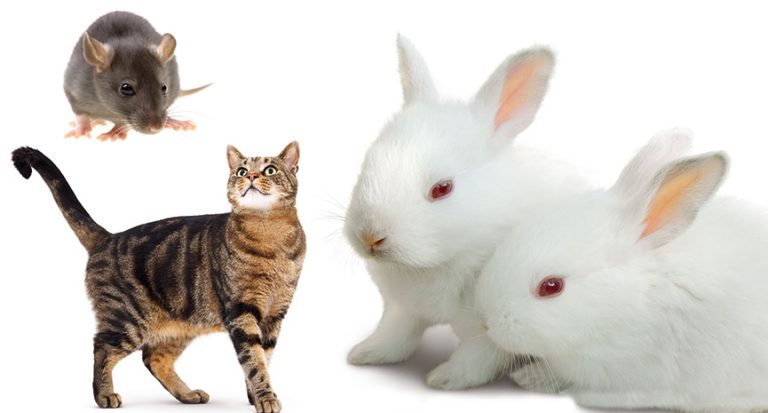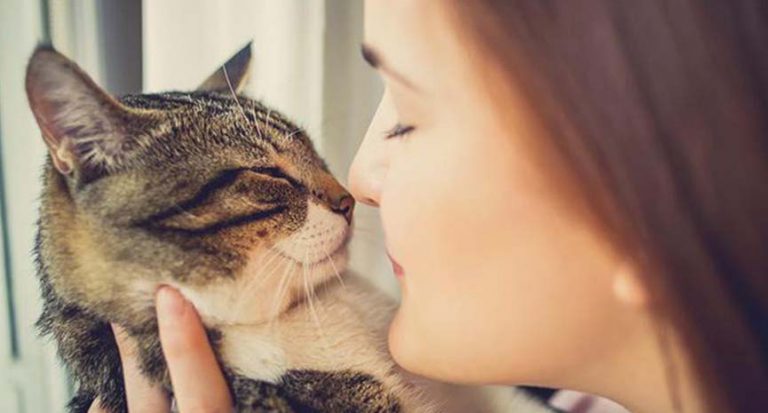For many, the introduction to hairless cats might have come from the Austen Powers movie featuring a feline character named Mr. Bigglesworth. This cat started out fluffy enough, but lost his fur through misadventure. In reality, hairless cats are not made, they are born that way.
The culprit that causes the hairless condition is a recessive gene that must be present in both parents to produce a hairless kitten. While two hairless mates will produce hairless kittens, two furred mates may also produce one or more hairless kittens if each parent harbors the recessive gene in it’s background.
The term “hairless” can also be a bit of a misnomer since some of these cats do carry a very small amount of fuzz, but the overall effect is that of a cat without fur. Although hairless kittens do occasionally pop up unexpectedly in a litter from time to time, there are cat breeds that perpetuate the hairless gene to produce these wonderful oddities.
These include such interesting breeds as:
- Sphynx cats
- Peterbald cats
- Bambino cats (Still in development)
- Kohana cats (A rare Hawaiian hairless)
Hairless cat breeds present definite care challenges for their owners, such as dealing with the oils on the skin. A hairless cat is exposed to all the elements including sun, wind and rain, so these felines should be mainly confined indoors unless suitable outdoor shelter can be provided for short periods.
Sun exposure is a real concern since these cats lack the protection against sunburns and heat stroke that fur normally provides. Sun block lotion is useful for filtering harmful ultraviolet rays, but it needs to be reapplied, just as you would for a human baby.
Drafts present another concern. It’s crucial to keep these cats in a cozy environment to stave off possible respiratory infections and pneumonia.
A lack of fur doesn’t mean these pets don’t need grooming. In fact, a hairless may actually require more care than some furred ones.
Normally, fur provides protection to keep the skin from being scraped or injured in some other way. Additionally, oils produced by the skin that are distributed through normal cat grooming behaviors are instead left to collect on the skin surface. This can result in a fairly greasy cat that requires more frequent bathing.
Since frequent bathing may also dry out the skin, some owners prefer to use a gentle baby shampoo followed with a bit of baby lotion applied to the skin afterward to keep it supple. Never use a blow dryer on your pet since this could result in a burn. Better to dry him or her with a soft flannel blanket, or smooth velour towel. It’s also important to provide these cats with soft bedding as added protection to keep scratches to a minimum.
Don’t assume that a hairless cat is hypo-allergenic. In fact, these cats still shed skin cells and saliva flakes that contain the same proteins that cause an allergic reaction in the first place. The fact that they do not shed fur is a plus, but it isn’t a complete solution for allergy sufferers.
Hairless cats have their own unique beauty and can certainly make wonderful pets, but they are not the breed for everyone. These felines require extra care to keep them warm and healthy, so you might be better off choosing one of the furry breeds unless you are prepared to give a hairless the special attention it so richly deserves.
However, if you do decide you can provide the care and environment a hairless needs, you will likely find the rewards of owning one of these felines far outweighs the challenges. Hairless cats love a good cuddle, and seem to truly enjoy a close relationship with their human companions.
With the popularity of long haired dog breeds like the Maltese, Lhasa Apso, and Collie, hairless breeds like the Chinese Crested and the Xoloitzcuintle may not get a lot of attention. The truth is that these unique breeds can make great pets as well. Some dog owners prefer these breeds with their minimum of fleas, allergens, doggy odor, coat clipping, and shedding.
Hairless breeds are considered hypoallergenic dogs. Although dog hair is not a cause of human allergies, the dog coat does attract and spread allergens such as skin dander, dust and pollen which cause the itchy, watery eyes, stuffy nose, sneezing, coughing, skin rash, swelling, and breathing problems.
Owners of a hairless breed will not be bothered by doggy odor or find themselves constantly vacuuming an abundance of dog hair off clothes, furniture and carpet.
But hairless dog breeds are prone to various skin problems including skin allergies, infections, and acne. Contrary to common belief, hairless breeds need baths more frequently than coated breeds. Generally, a mild, oatmeal based dog shampoo and moisturizer every week or so, along with a diet rich in essential fatty acids, will help prevent skin problems.
In winter, hairless breeds need protection from the cold. A sweater or coat of natural fibers will keep the hairless breed warm and protect the skin from becoming excessively dry in harsh weather. Hairless dog breeds also need a hypoallergenic sunscreen applied to protect from sunburn.
Some options include:
- The Chinese Crested seems to be the most commonly known hairless dog breed. Although there is a Powder Puff variety that is coated, the hairless variety has no hair except for tufts on the head, feet and tail. Both varieties can occur in the same litter. These dogs are playful, cuddly and tend to bark very little.
- The Hairless Khala, comes in two varieties, the Hairless Khala Medio which is short legged and the Hairless Khala Grande which is longer legged. These dogs are affectionate with family but may be indifferent or unfriendly with strangers.
- The Peruvian Inca Orchid is hairless except for thin tufts on the head. Occasionally a PIO is born coated. This breed is sensitive to sunlight and bright light and is sometimes called a Moonflower.
- The American Hairless Terrier is a descendant of the Rat Terrier. The first known hairless Rat Terrier was born in 1972 in Louisiana. This hairless female gave birth to several hairless puppies during her lifetime and this was the beginning of the breed which is somewhat different from other hairless breeds in that it takes two dominant genes, instead of one, to produce a hairless dog. The AHT, retains the intelligent, playful and fearless nature of the Rat Terrier.
- The Xoloitzcuintli, or Mexican Hairless, can be a variety of colors as well as Toy, Miniature, or Standard in size. A miniature version is called the Tepeitzcuintli. Coated and hairless can appear within the same litter. This is a hardy breed with a long life expectancy and popular because of its intelligence, affection, and protectiveness of family.
While some dog lovers are attracted to fuzzy faces, beauty is in the eye of the beholder. Hairless dog breeds exhibit a beauty all their own and can make wonderful, loveable pets.





